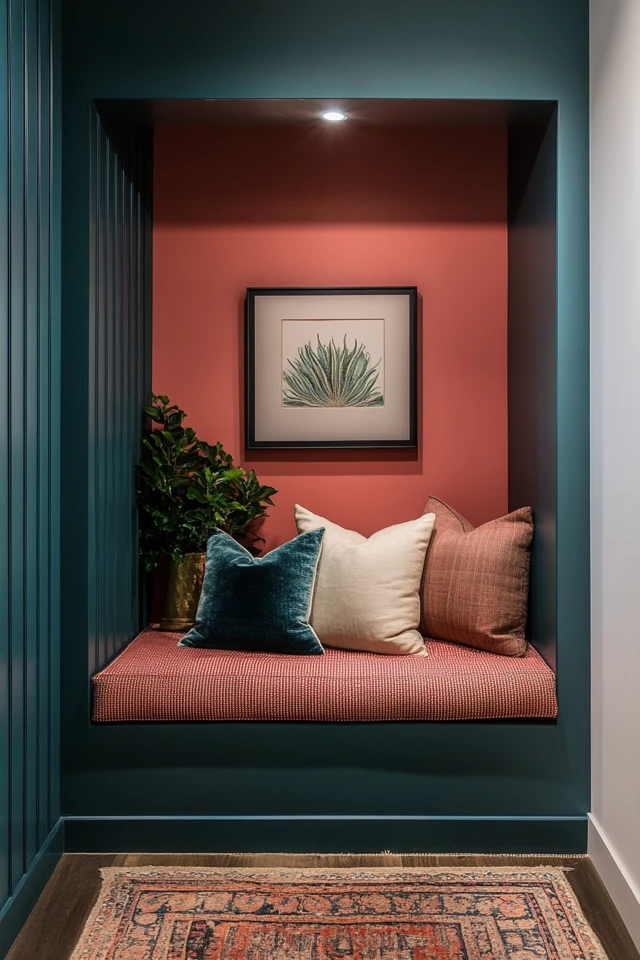Introduction
Nooks are often overlooked in home design, treated as awkward spaces or afterthoughts in the layout. However, these small, cozy corners hold immense potential to become functional and stylish focal points. Whether it’s a reading nook, a breakfast corner, or a workspace tucked under the stairs, well-designed nooks can transform unused areas into standout features that enhance your home’s overall aesthetic.
I discovered the power of nooks while renovating a narrow hallway in my home. Initially, the space felt underwhelming and forgotten. But with a built-in bench, a few throw pillows, a floating shelf, and a framed piece of art, it became a charming reading nook that drew compliments from every guest. What was once wasted space became a key design feature, adding personality and functionality to my home.
In this guide, we’ll explore how to design nooks that not only serve practical purposes but also act as focal points in your space. Whether you’re working with an awkward corner or an underutilized alcove, these ideas will help you turn your nooks into stylish, inviting, and multifunctional highlights.
The Perfect Design for You
Designing nooks that double as focal points is perfect for anyone looking to maximize their space while adding charm and character to their home. It’s especially ideal for smaller homes, apartments, or open-concept layouts where every square inch counts.
Imagine a sunny corner with a built-in bench and floor-to-ceiling bookshelves, creating a reading nook that feels both functional and luxurious. Or picture a workspace tucked into an alcove, styled with a bold accent wall and chic decor that make it a feature instead of an afterthought. These nooks are more than just practical—they’re conversation starters, style statements, and cozy retreats.
Whether your style leans modern, rustic, eclectic, or minimalist, these tips will help you create nooks that seamlessly blend beauty and utility, elevating your home’s design.
Picture Gallery
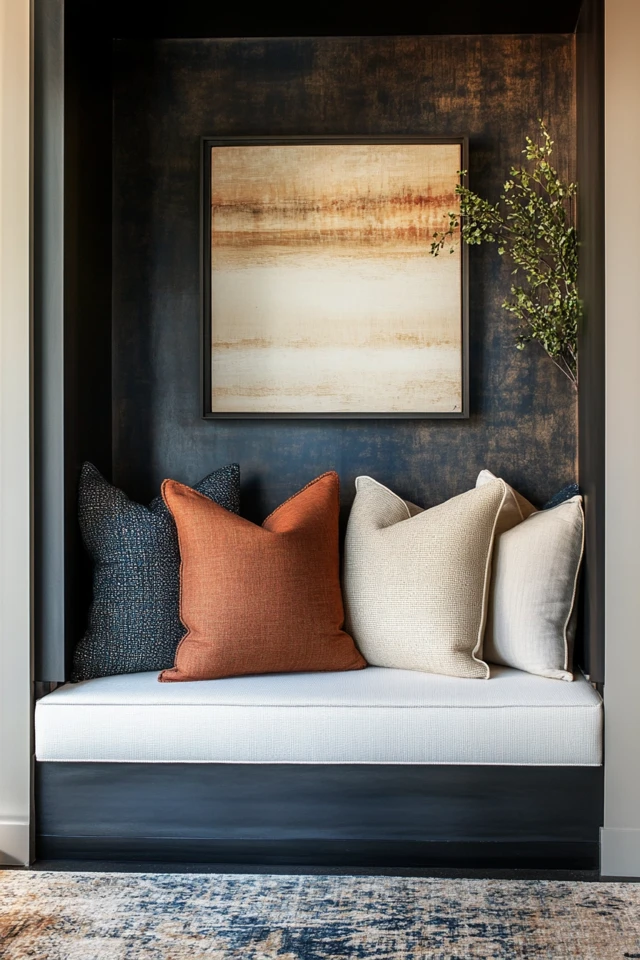
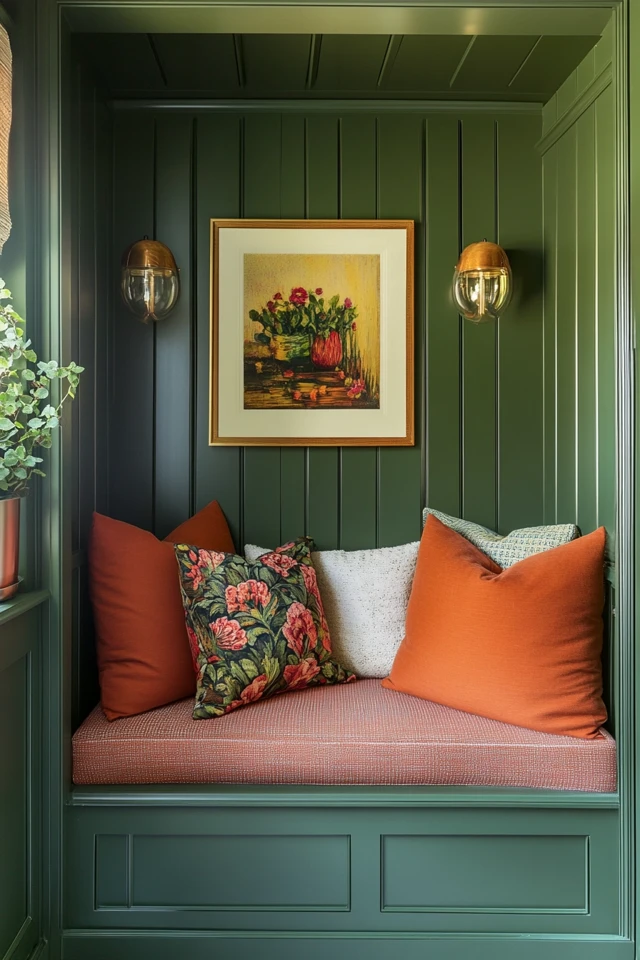
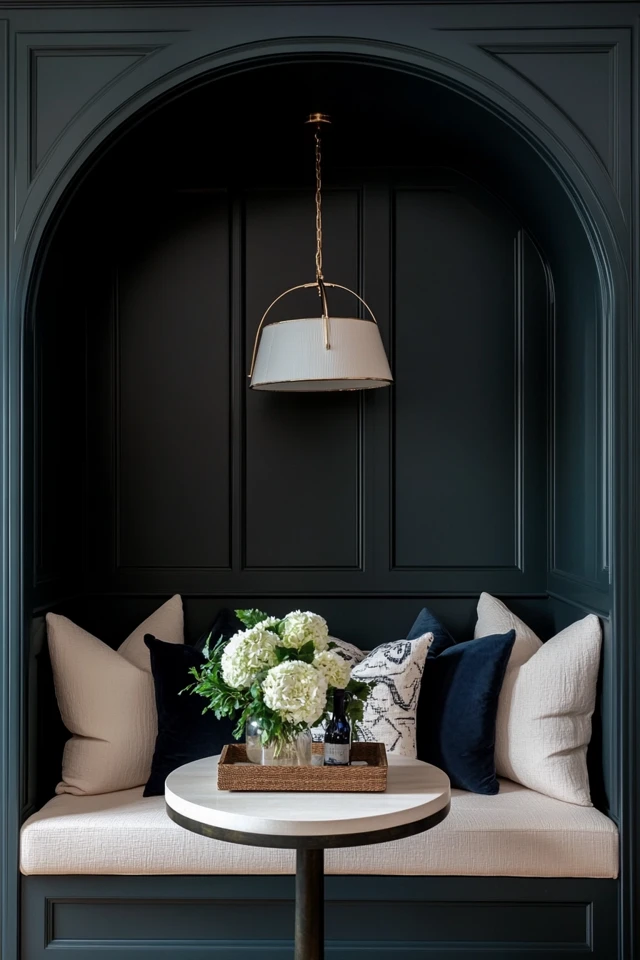
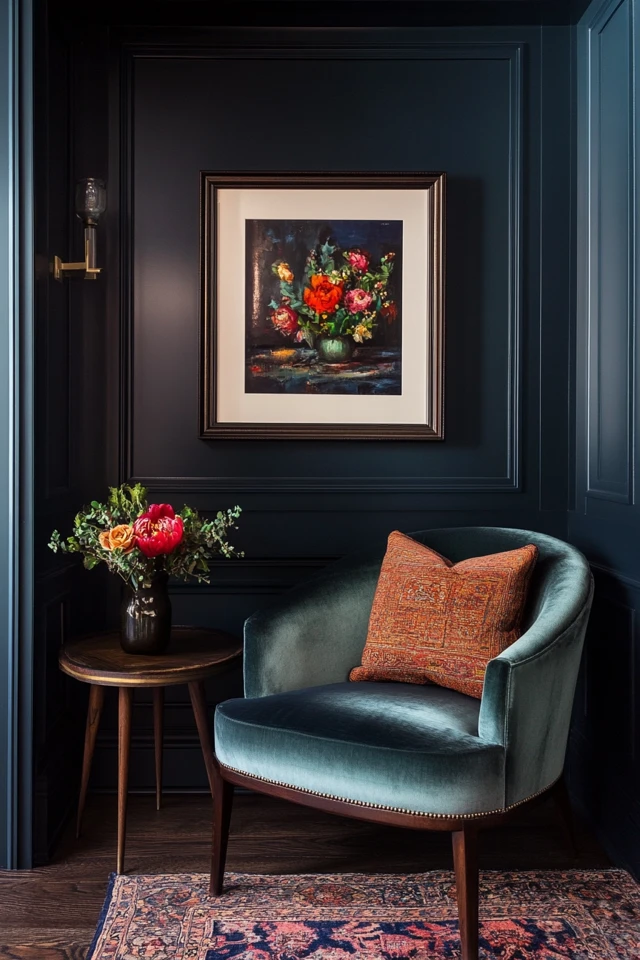

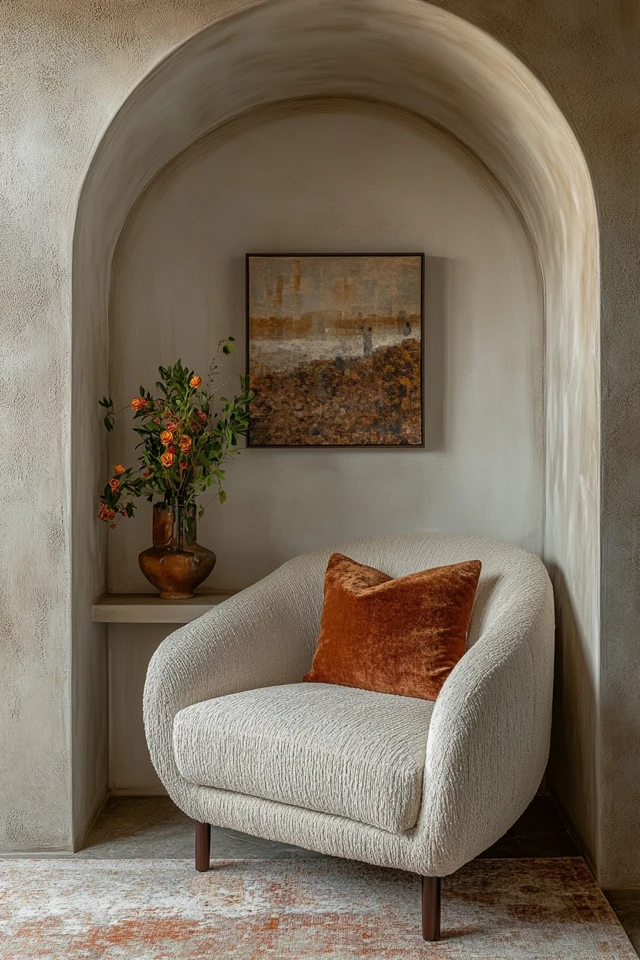
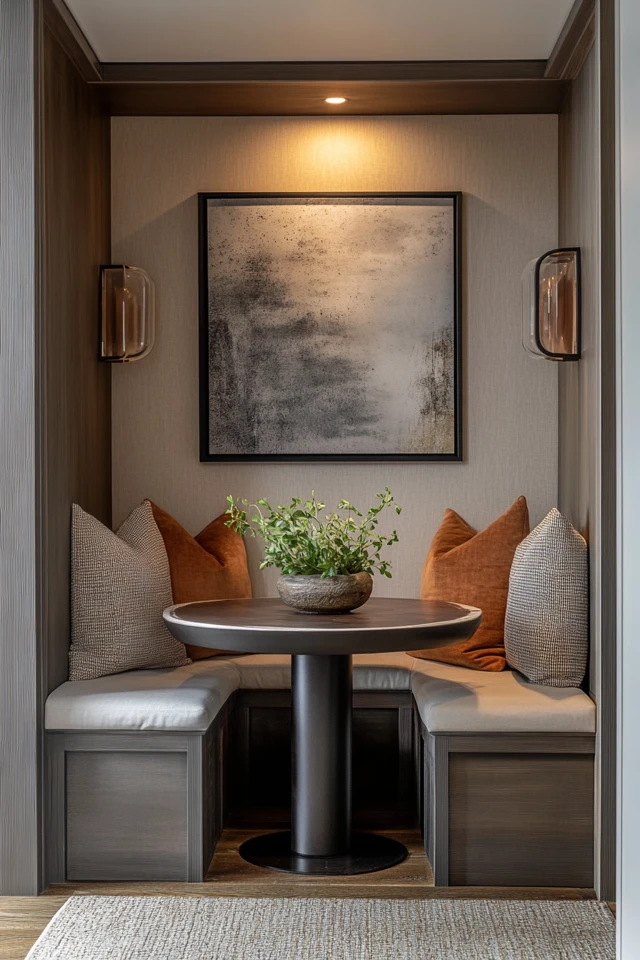
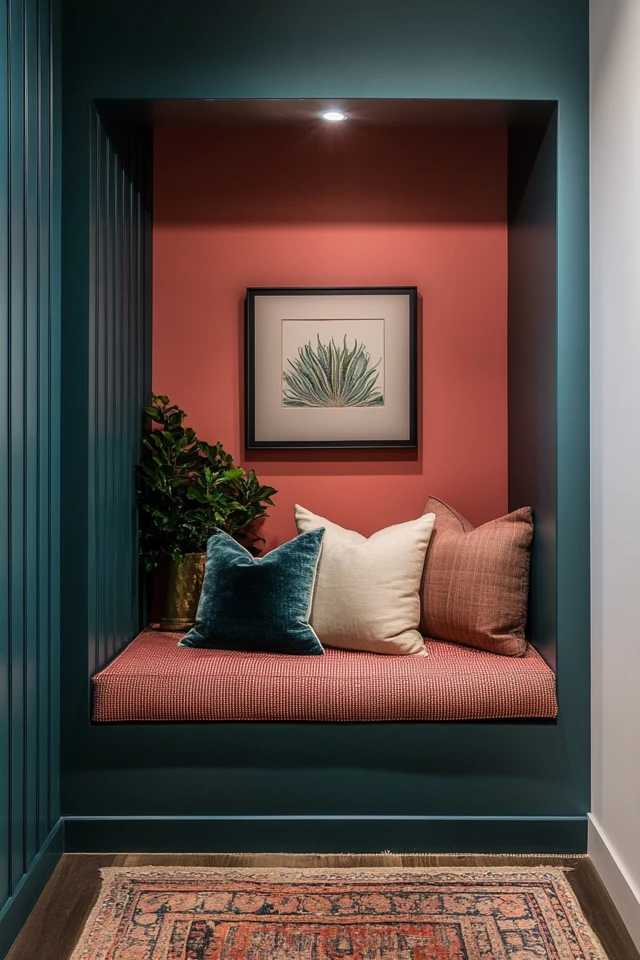
Why Nooks Make Great Focal Points
Nooks are versatile and inherently inviting, making them ideal for creating focal points in your home. Here’s why they work so well:
- Unique Layouts: Nooks often occupy unconventional spaces, drawing attention and adding intrigue to your design.
- Multi-Functionality: By serving both practical and decorative purposes, nooks enhance a room’s functionality while adding personality.
- Intimacy and Coziness: Their small scale naturally creates a sense of comfort and charm, making them visually appealing.
- Contrast: A well-designed nook can stand out against a larger room’s backdrop, creating a point of interest that anchors the space.
- Opportunity for Creativity: Nooks offer a chance to experiment with bold colors, textures, or decor without overwhelming the entire room.
Design experts often emphasize the importance of focal points in creating balanced, cohesive spaces. Nooks can fill this role beautifully, offering a perfect blend of function and flair.
How to Design Nooks That Double as Focal Points: Step-by-Step
1. Identify Your Space
- Look for unused or underutilized areas in your home:
- An empty corner of the living room or bedroom.
- The space under a staircase.
- A hallway alcove or bay window.
- The area beside a fireplace or at the end of a corridor.
2. Define the Function
- Decide how the nook will be used:
- Reading Nook: Include a comfy seat, good lighting, and shelves for books.
- Workspace: Add a compact desk, ergonomic chair, and stylish storage.
- Breakfast Nook: Incorporate a small table, cozy seating, and decorative accents.
- Kids’ Corner: Create a play area with soft seating, storage bins, and playful decor.
3. Add Seating
- Comfortable seating is key to creating an inviting nook:
- Use a built-in bench or a small armchair for reading or relaxing.
- Add cushions, throws, or padded upholstery for extra comfort and style.
- For tight spaces, opt for foldable or wall-mounted seating.
4. Create Depth with Color and Texture
- Use bold or contrasting colors to make your nook stand out:
- Paint the wall behind the nook in a rich, vibrant hue or use a striking wallpaper.
- Incorporate textured materials like shiplap, brick, or wood paneling for added interest.
- Layer textiles like rugs, cushions, and curtains to soften the space and make it more inviting.
5. Incorporate Storage
- Maximize functionality by adding stylish storage solutions:
- Use floating shelves or built-in cabinets to store books, decor, or supplies.
- Add baskets, bins, or drawers beneath seating for hidden storage.
- Use a storage ottoman or coffee table to keep the nook tidy.
6. Anchor the Space with Lighting
- Lighting is essential to creating a functional and visually appealing nook:
- Use pendant lights or wall sconces for focused task lighting.
- Add string lights, fairy lights, or a small table lamp for a cozy ambiance.
- Position your nook near a window to take advantage of natural light.
7. Style with Decor
- Make your nook a visual focal point with carefully chosen decor:
- Add framed artwork, mirrors, or wall-mounted decor to personalize the space.
- Include plants or greenery for a touch of life and color.
- Use a mix of decorative and functional items, like books, vases, or trays.
8. Define the Area with Rugs or Dividers
- Use a rug or divider to visually separate the nook from the rest of the room:
- Place a small area rug beneath the seating to anchor the space.
- Use a folding screen, curtain, or bookcase to create privacy or define the nook.
9. Experiment with Shapes and Layouts
- Don’t be afraid to think creatively about your nook’s layout:
- Create a curved or L-shaped seating area for a unique design.
- Use asymmetrical shelving for a modern, dynamic look.
- Combine elements like a built-in bench and a freestanding chair for versatility.
10. Evaluate and Refine
- Step back and assess your nook to ensure it works as a focal point:
- Does it draw attention without overwhelming the room?
- Is it both functional and visually appealing?
- Make adjustments to color, decor, or layout as needed.
FAQ
1. What makes a nook a focal point?
A nook becomes a focal point when it draws attention through its design, color, or unique features while blending seamlessly with the rest of the room.
2. Can I create a nook in a small space?
Absolutely! Even a tiny corner can be transformed into a focal-point-worthy nook with the right seating, decor, and lighting.
3. How do I balance functionality and style in a nook?
Choose multifunctional furniture (like built-in benches with storage), and incorporate decor that reflects your style without cluttering the space.
4. What’s the best way to light a nook?
Use task lighting for functionality (e.g., reading lights) and ambient lighting (e.g., sconces or string lights) to create a cozy atmosphere.
5. How do I keep a nook cohesive with the rest of the room?
Use a similar color palette and design elements to tie the nook to the surrounding space while allowing it to stand out.
Variations
- Modern Minimalism: Use clean lines, neutral colors, and simple decor for a sleek, understated nook.
- Rustic Charm: Incorporate reclaimed wood, cozy textiles, and vintage-inspired decor for a warm, farmhouse-style nook.
- Bohemian Flair: Add layered rugs, colorful cushions, and eclectic decor for a relaxed, boho-inspired space.
- Industrial Edge: Use metal shelving, exposed brick, and muted tones for an urban, industrial vibe.
- Glamorous Retreat: Include velvet upholstery, metallic accents, and a statement chandelier for a luxe, sophisticated nook.
How to Showcase It
- Living Rooms: Create a reading nook with a cozy chair, a side table, and a floor lamp.
- Bedrooms: Design a window seat with plush cushions and built-in storage for a serene retreat.
- Kitchens: Add a breakfast nook with a small table, bench seating, and bright, cheerful decor.
- Home Offices: Transform an alcove into a functional workspace with a compact desk and shelves.
- Hallways: Use a narrow bench, a gallery wall, and a mirror to turn a hallway into a stylish, functional nook.
Occasions to Feature It
- Daily Relaxation: Use your nook as a personal retreat for reading, meditating, or enjoying a cup of coffee.
- Entertaining Guests: Showcase your nook as a charming feature that adds personality to your home.
- Seasonal Decor: Refresh your nook with seasonal accents like throw pillows, blankets, or festive decor.
- Family Gatherings: Create a cozy space where kids and adults can relax together.
- Creative Pursuits: Use your nook as a workspace for writing, drawing, or other hobbies.
Conclusion
Designing nooks that double as focal points is a creative and rewarding way to enhance your home’s functionality and style. By turning underutilized spaces into charming, purposeful areas, you can make your home feel more inviting and personalized.
The beauty of nooks lies in their versatility—they can be tailored to fit any room, style, or need, from cozy reading corners to efficient workstations. With the right mix of furniture, decor, and thoughtful design, your nook can become a standout feature that draws attention and serves as a daily retreat.
So embrace the potential of your small spaces, and transform them into nooks that not only work for you but also wow everyone who enters your home. Let these charming focal points bring new life and personality to your living space!

